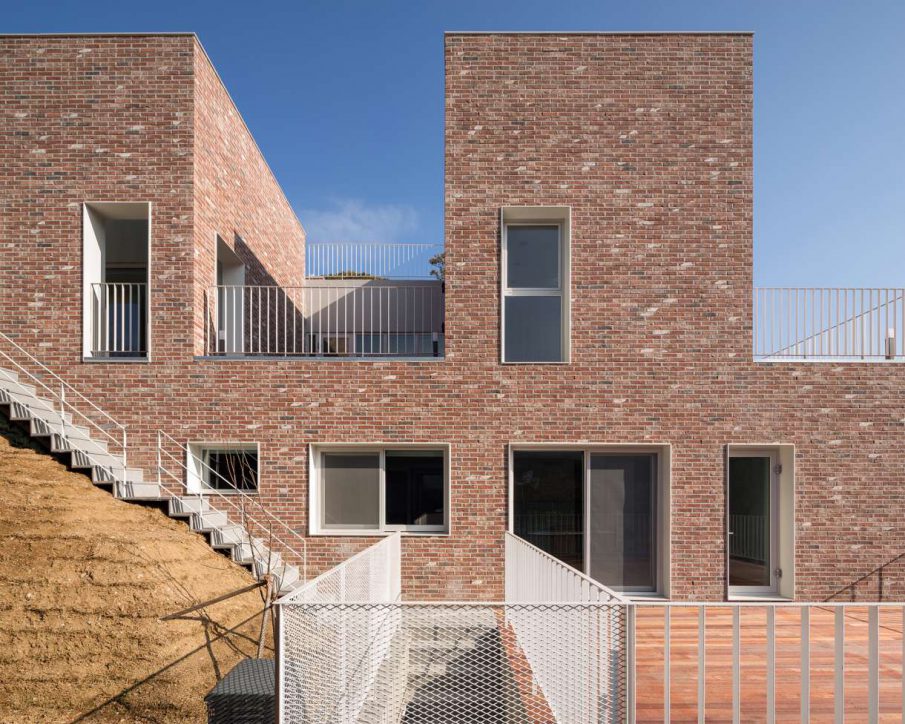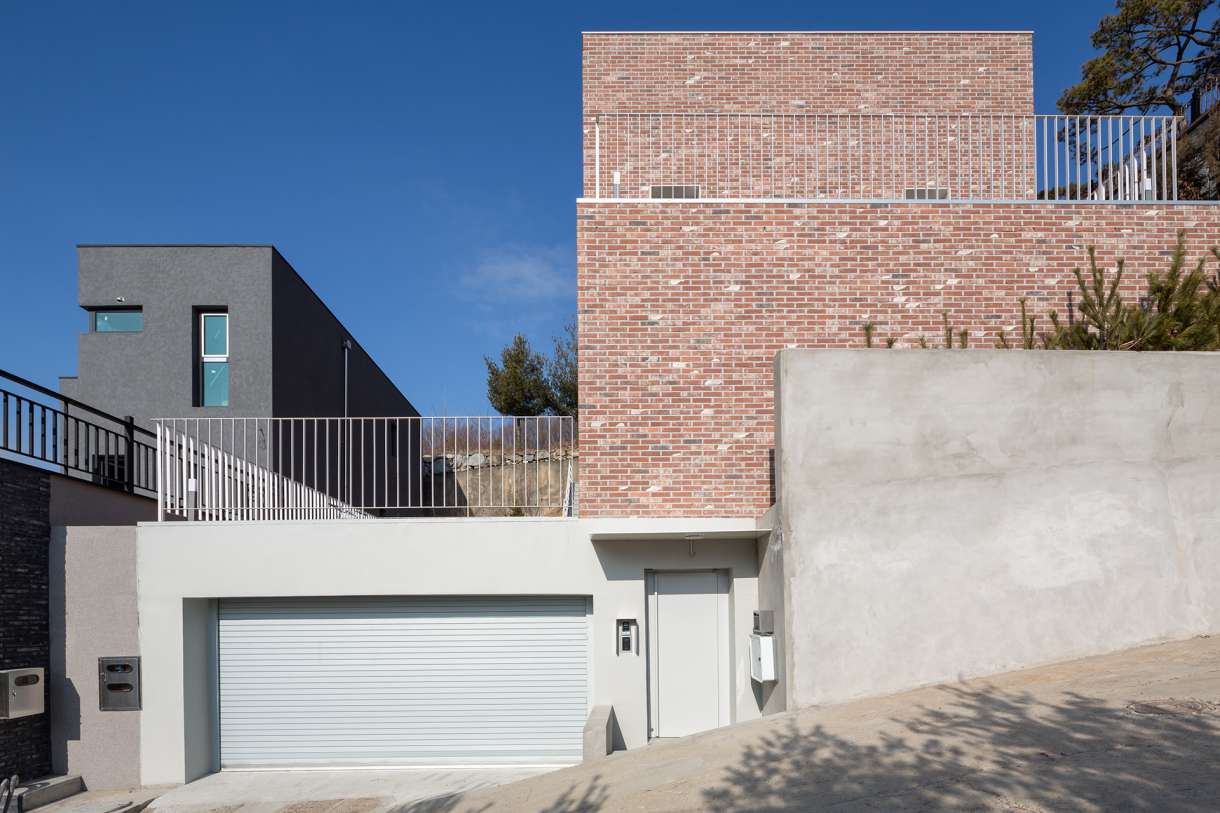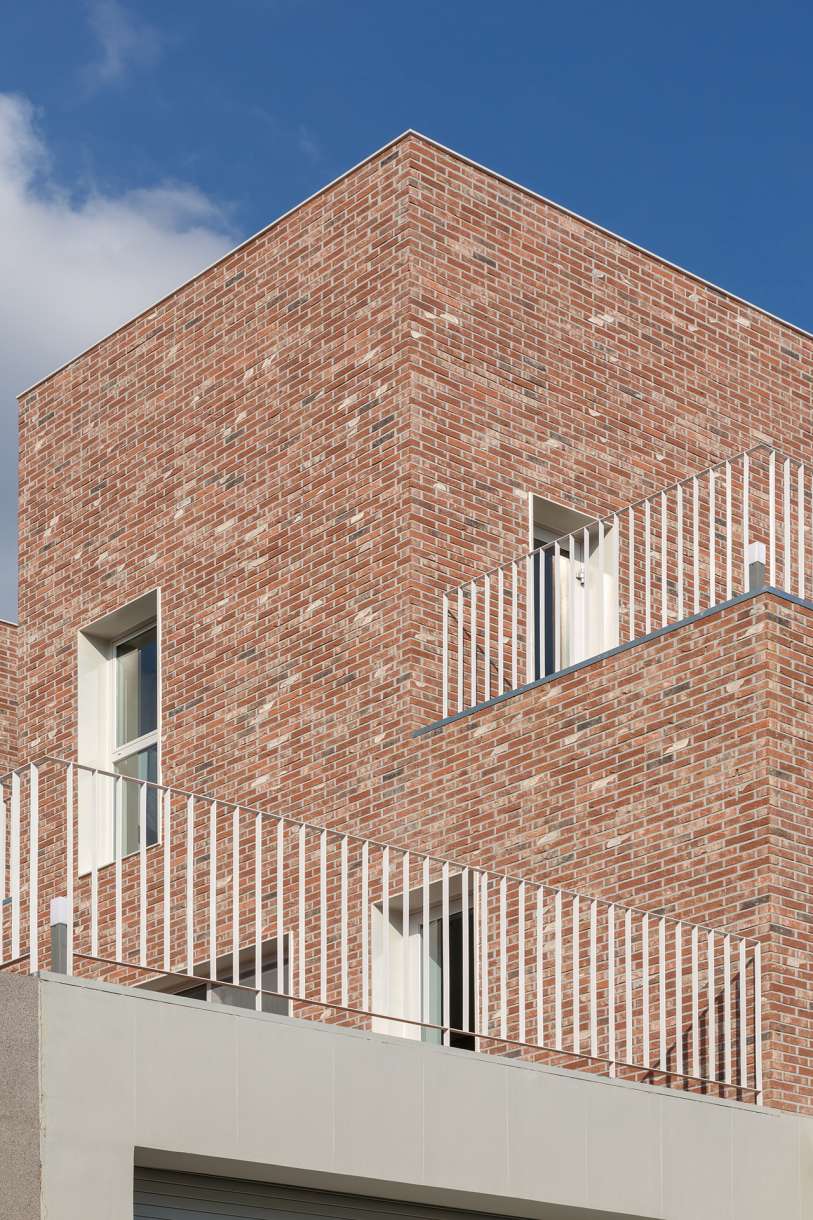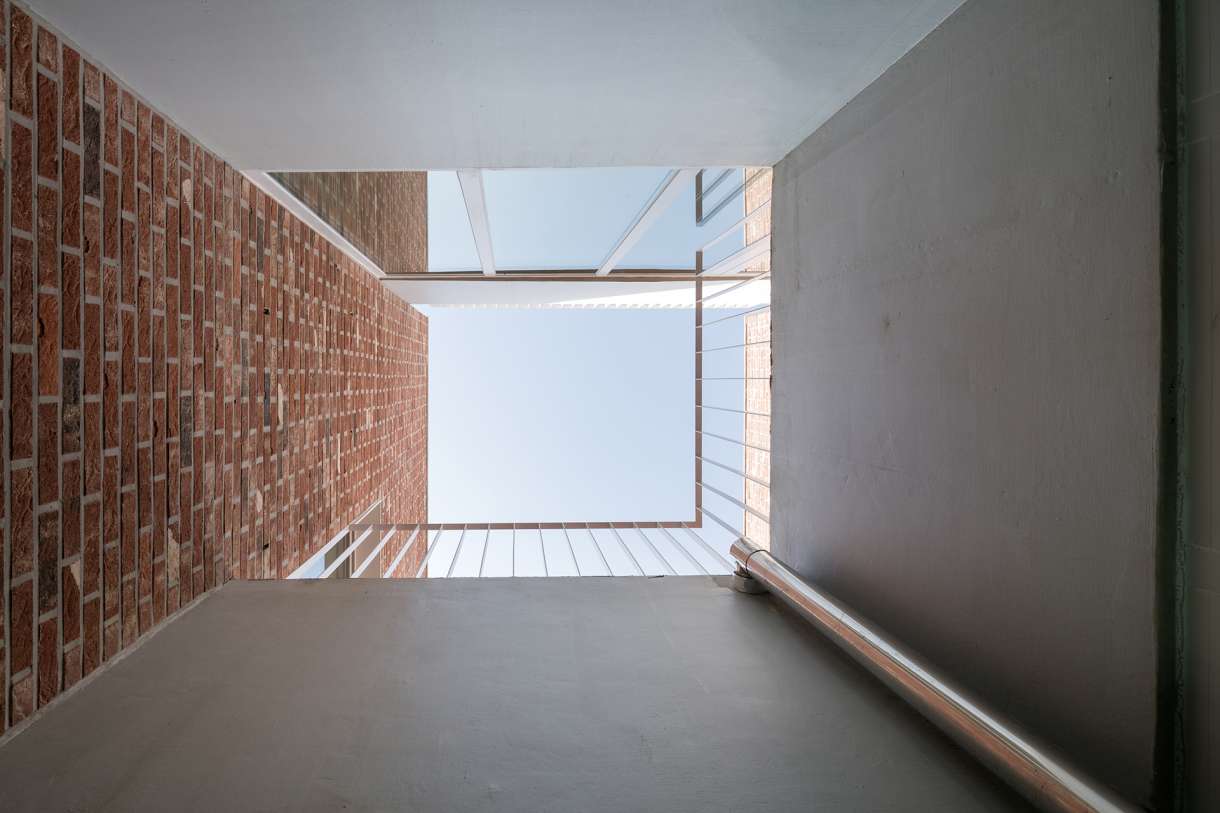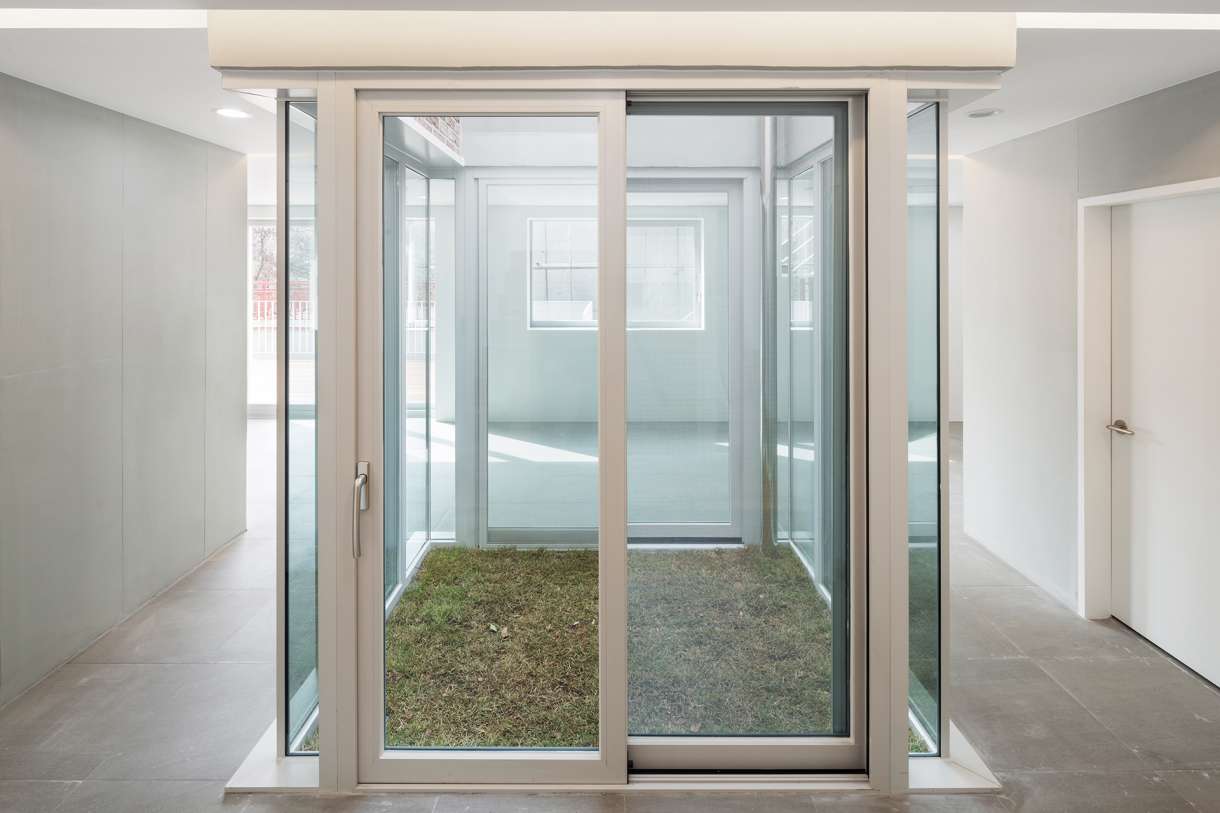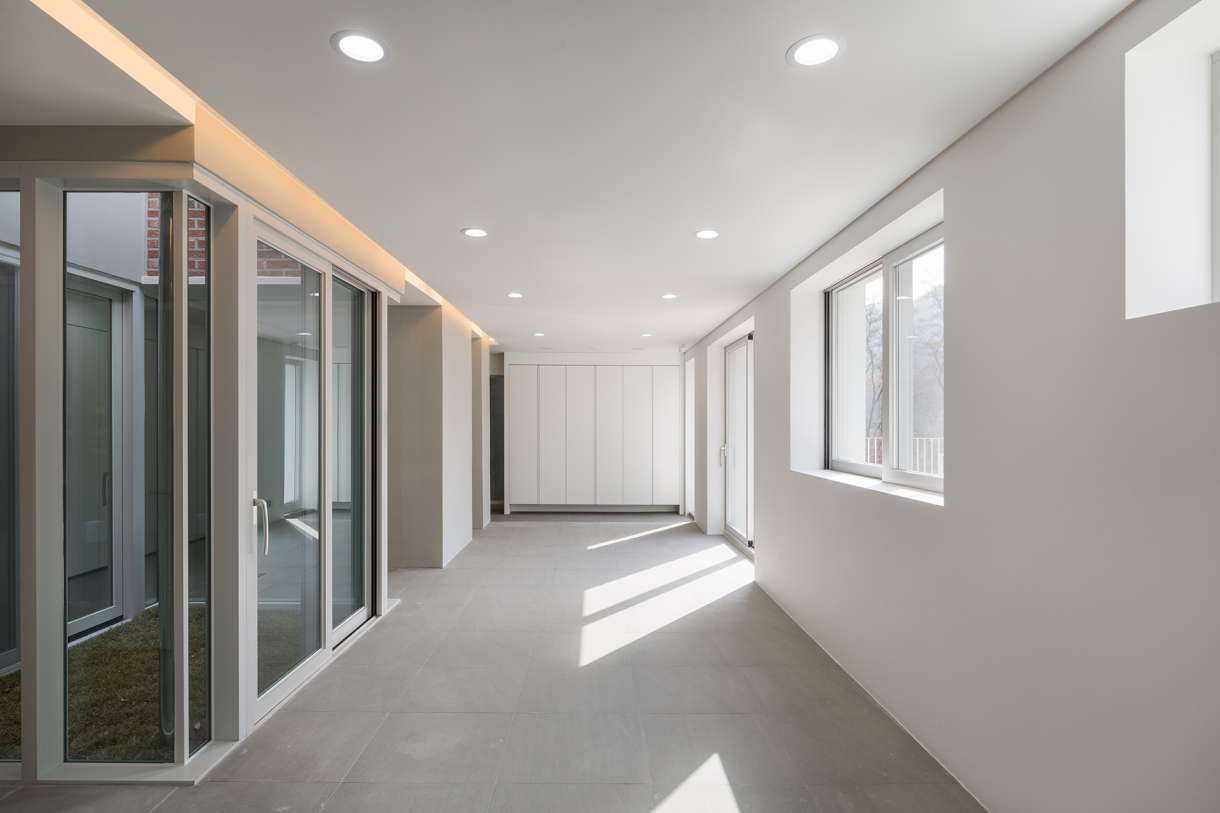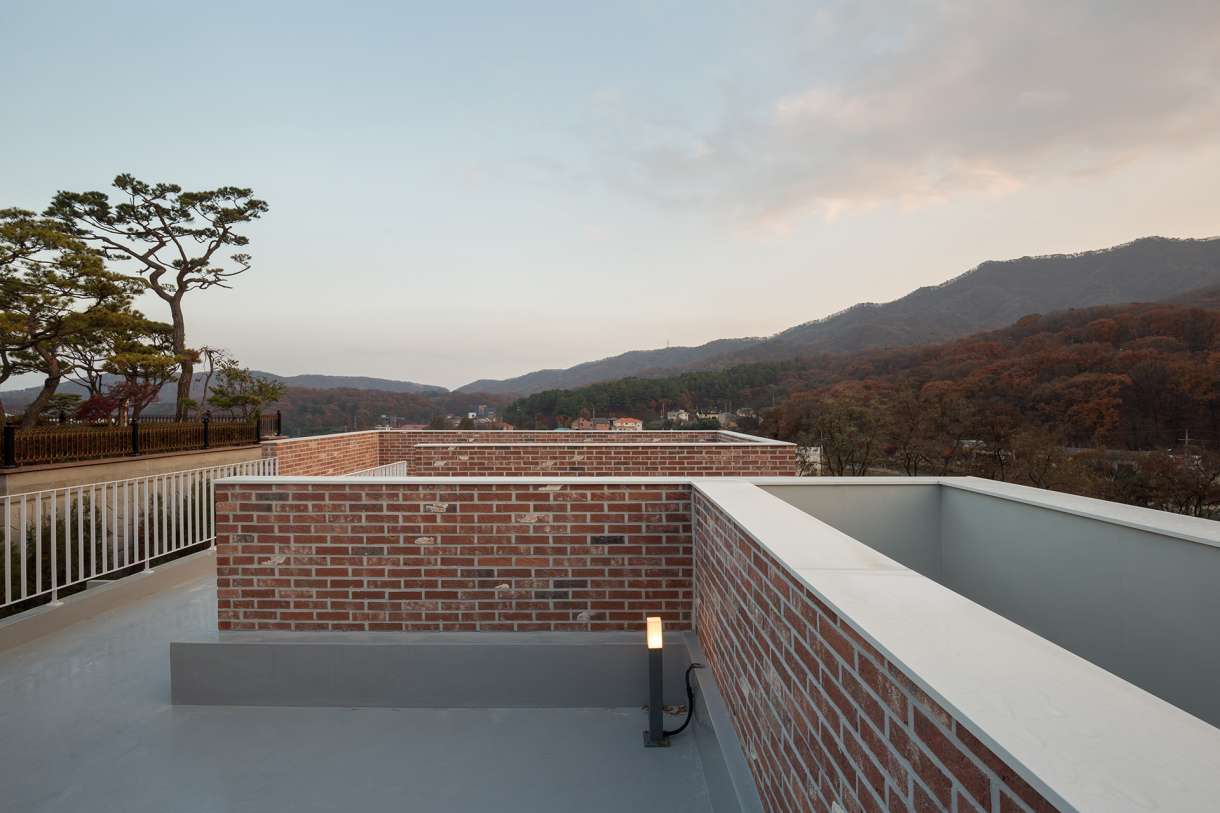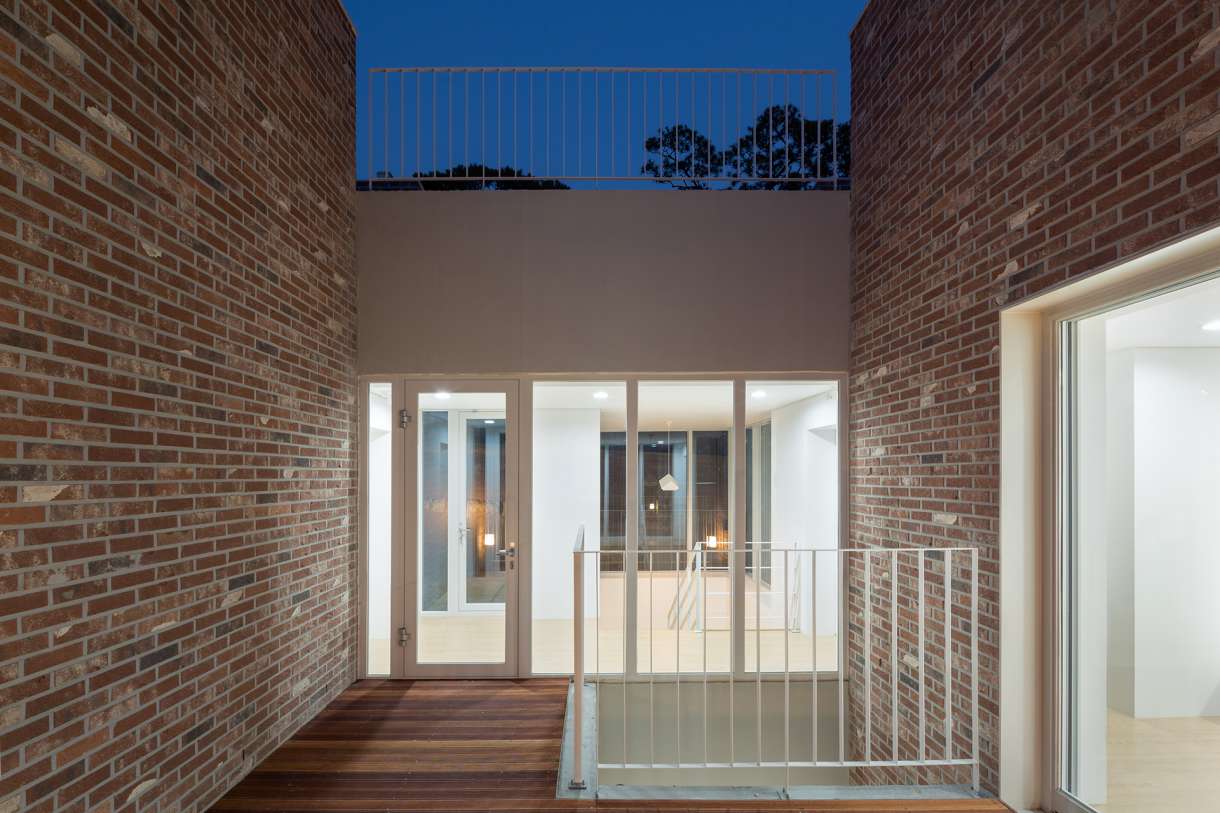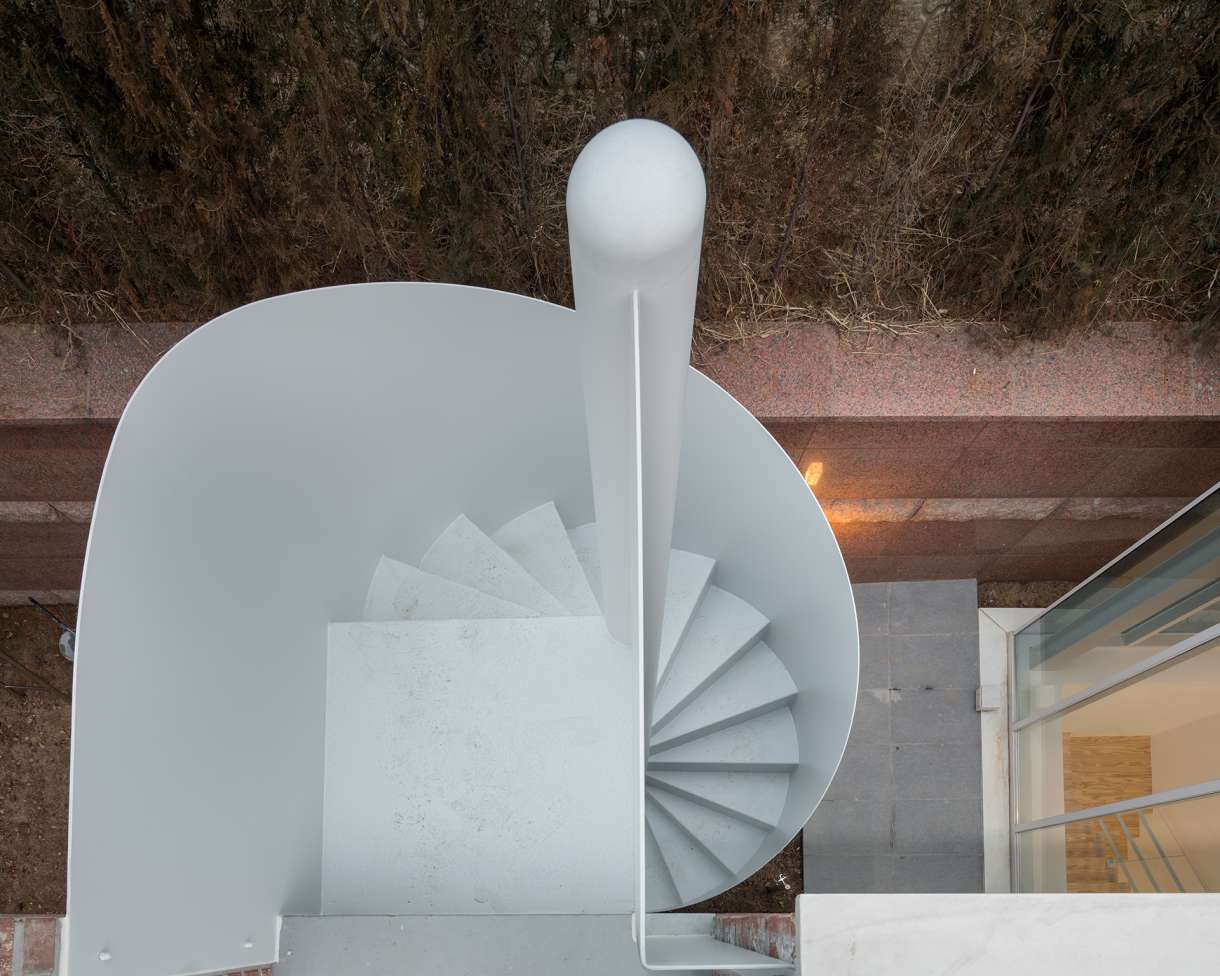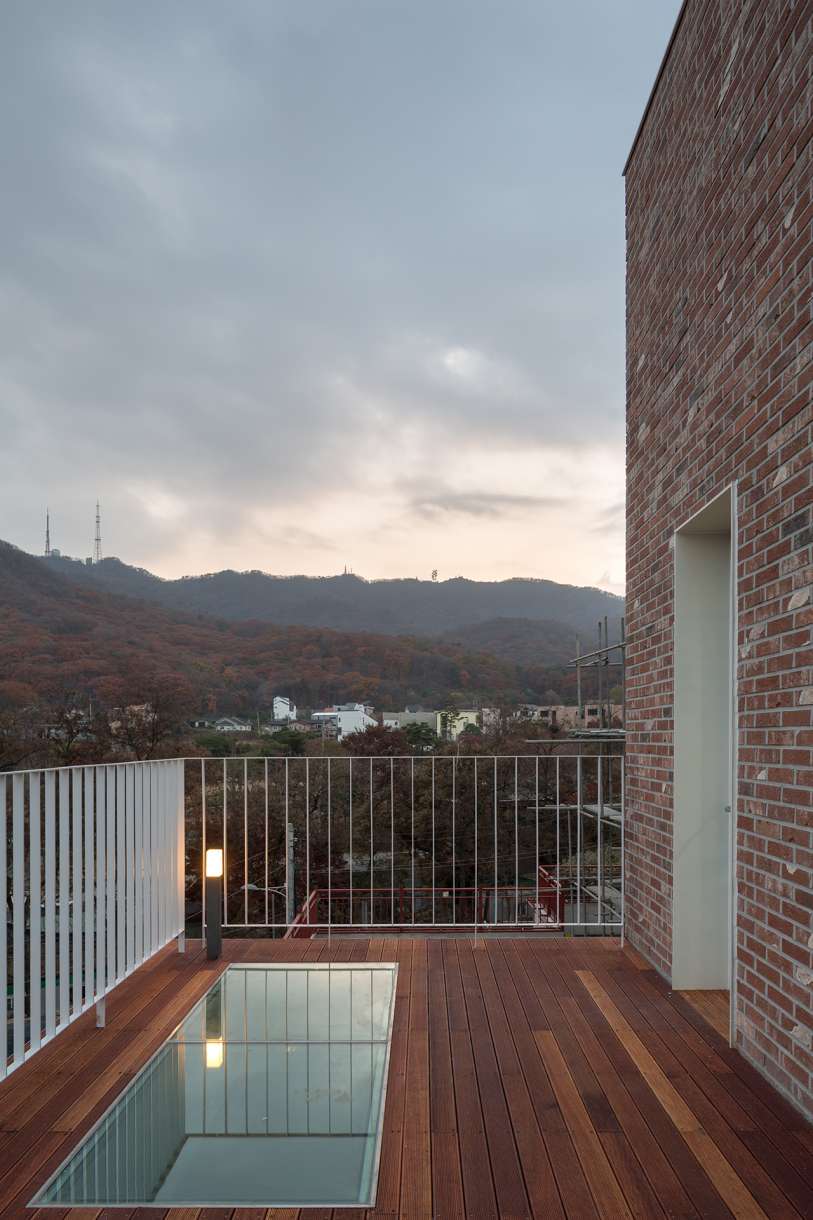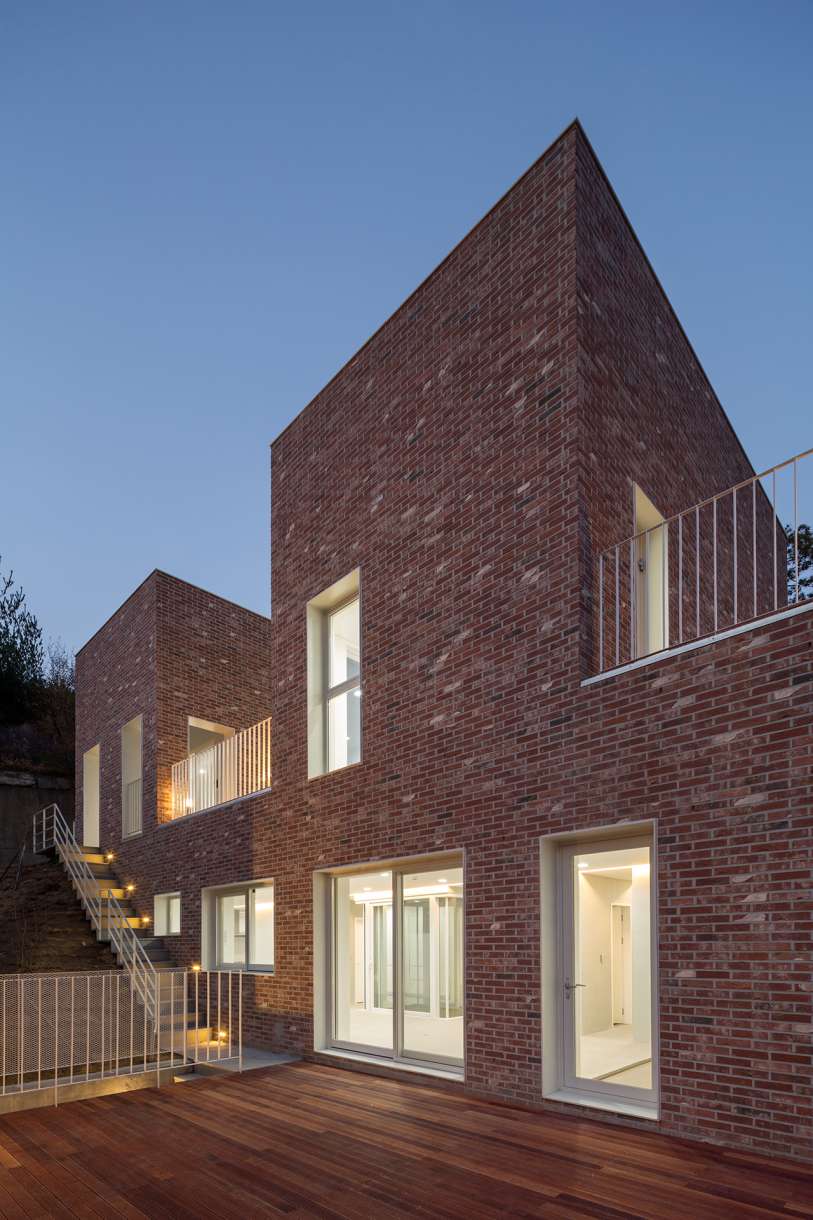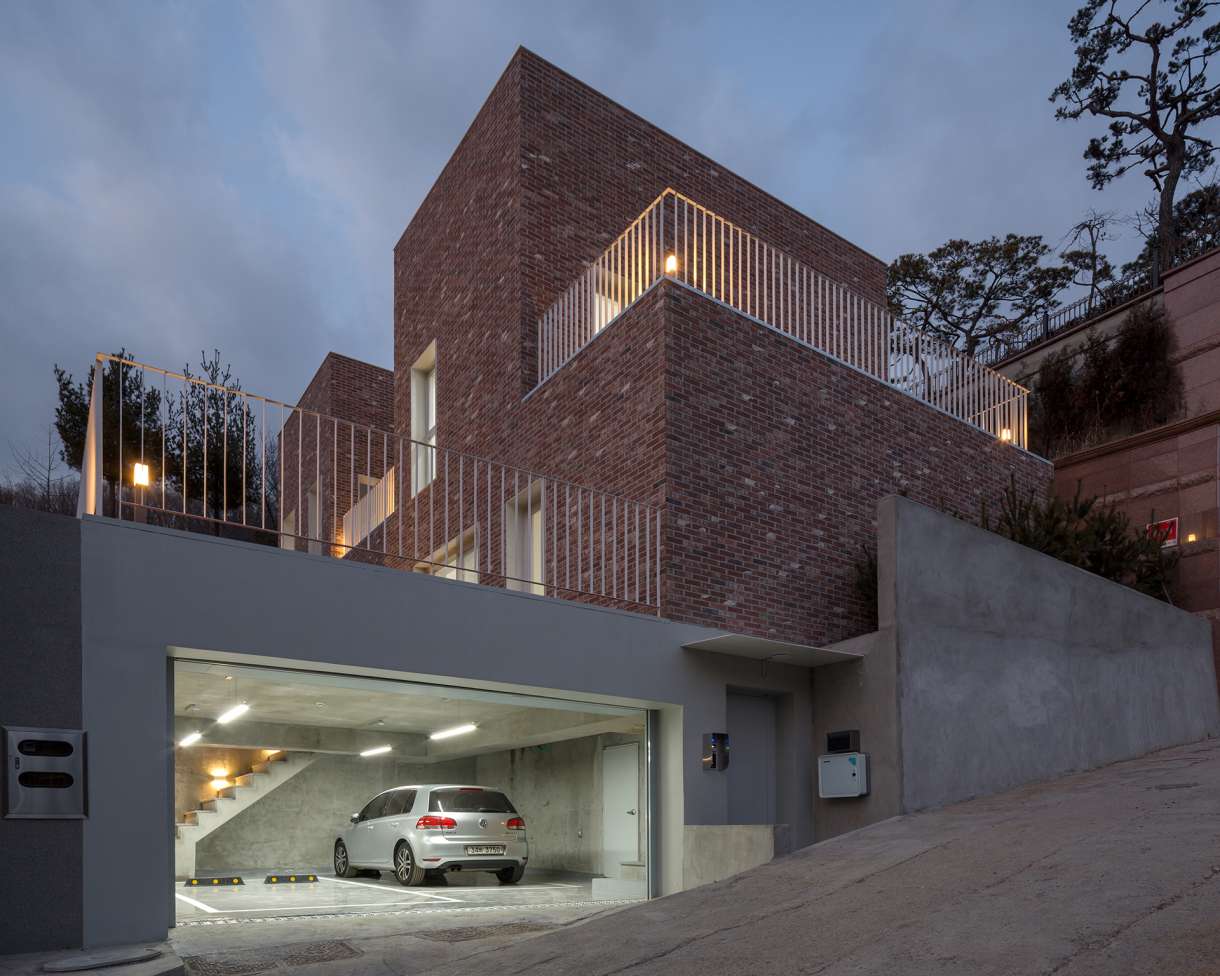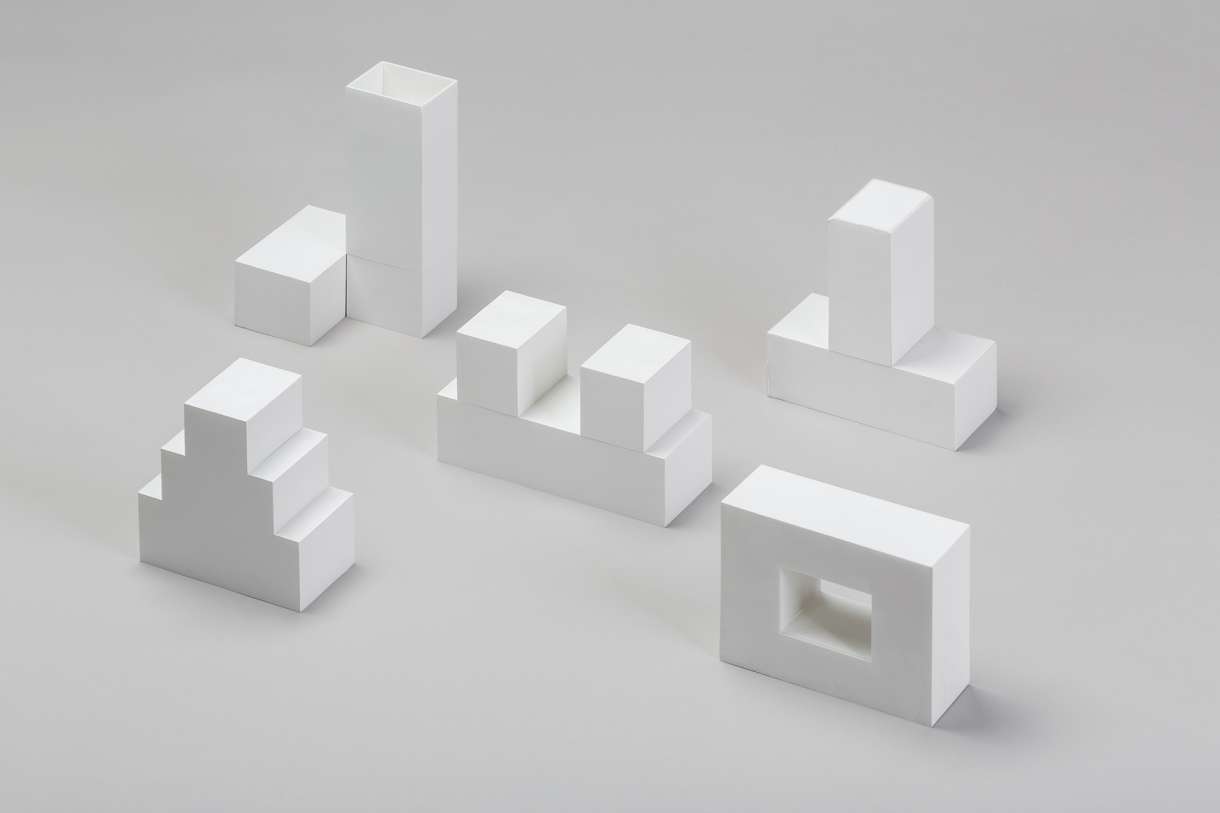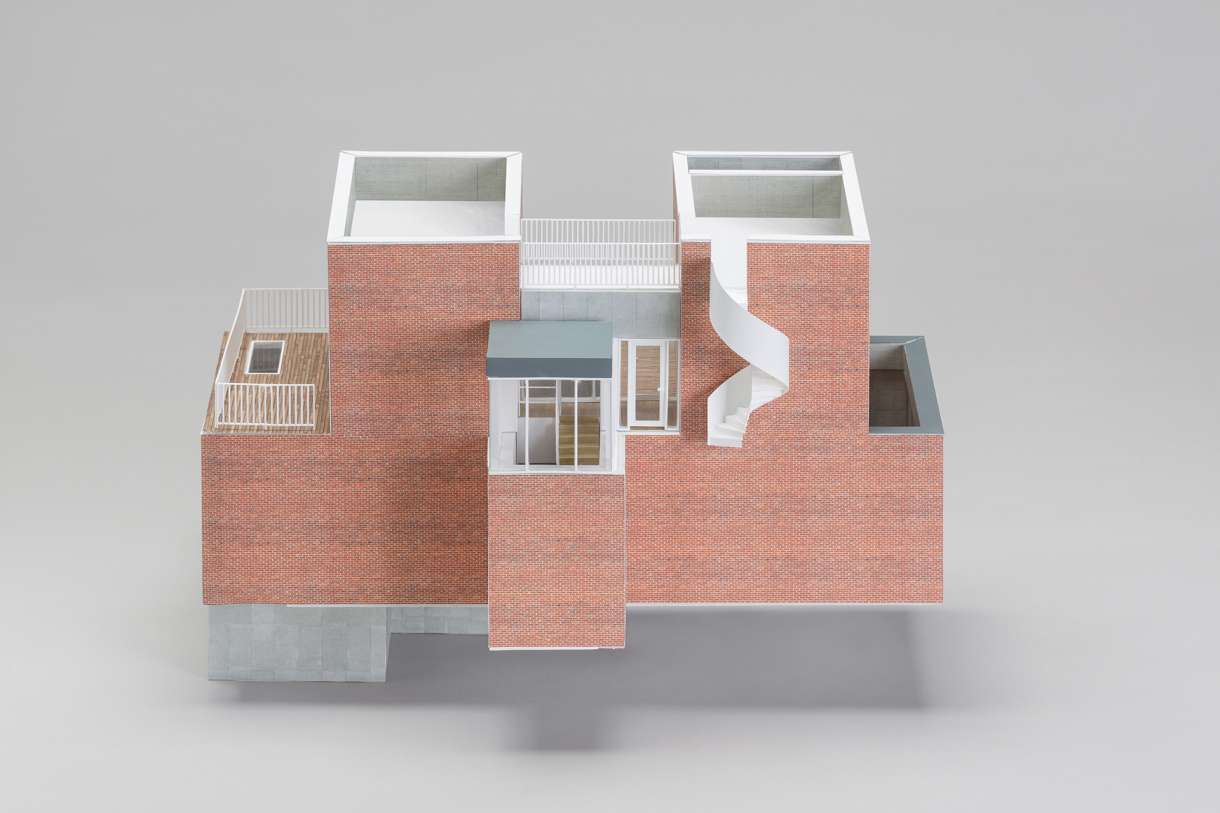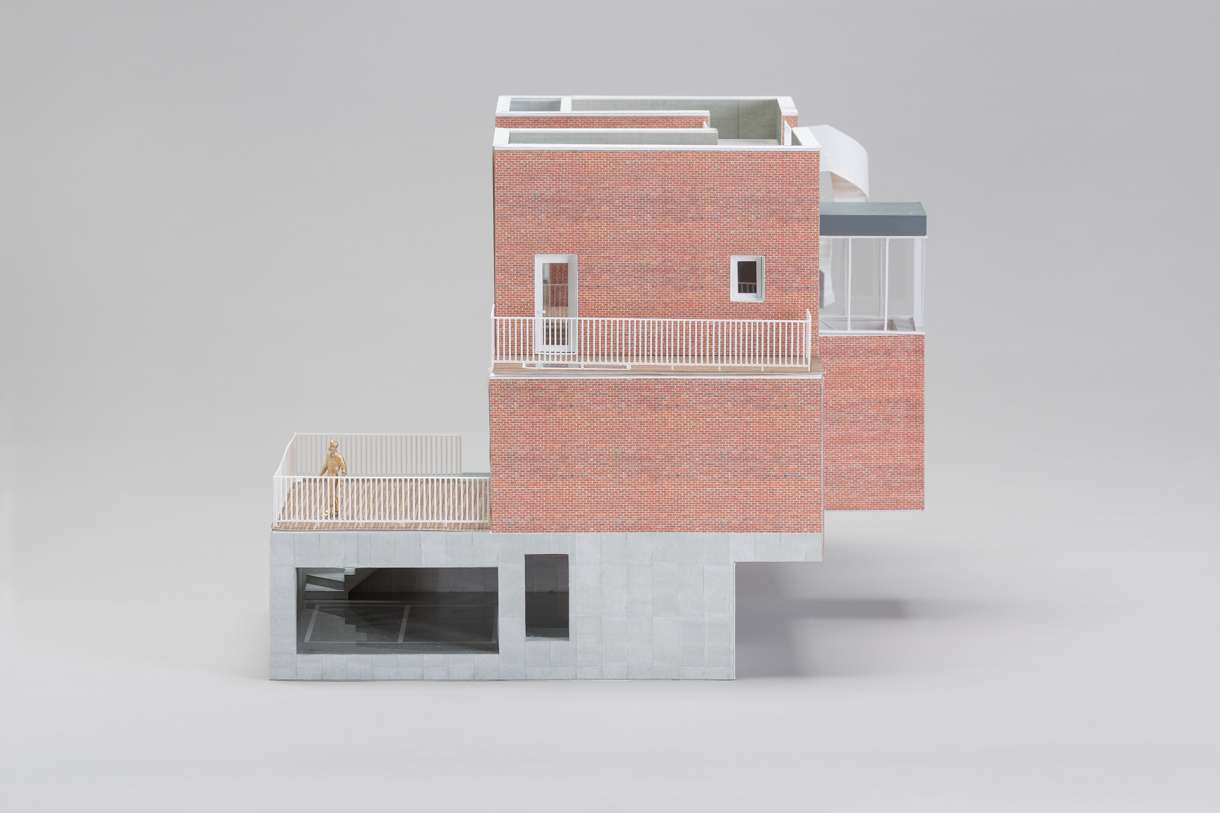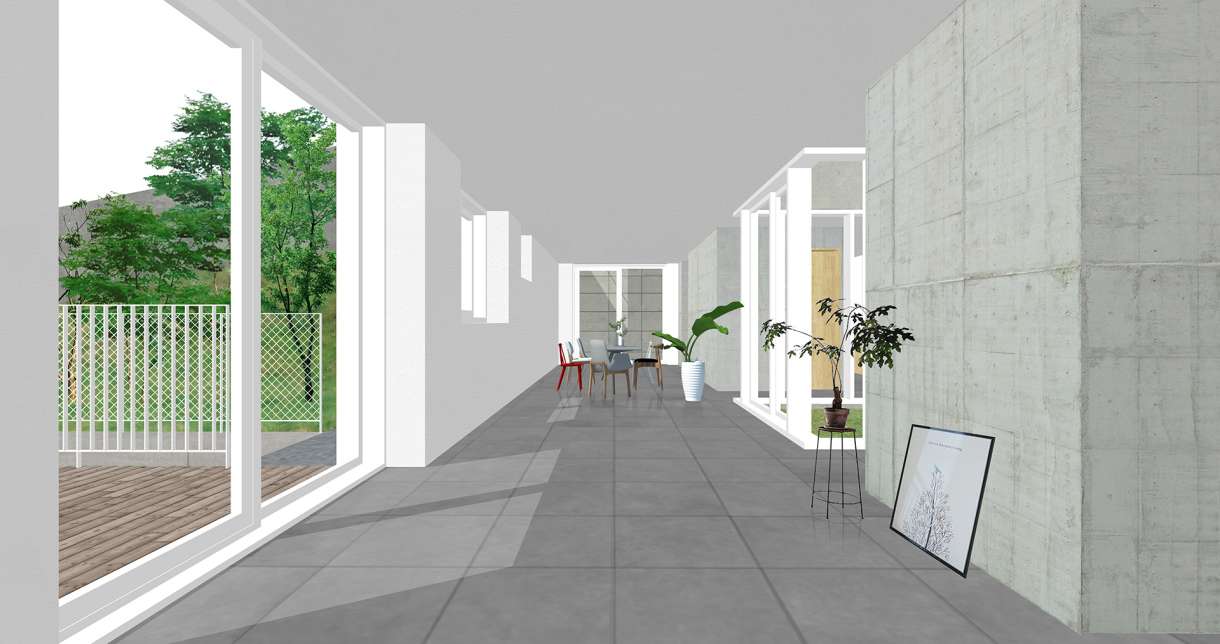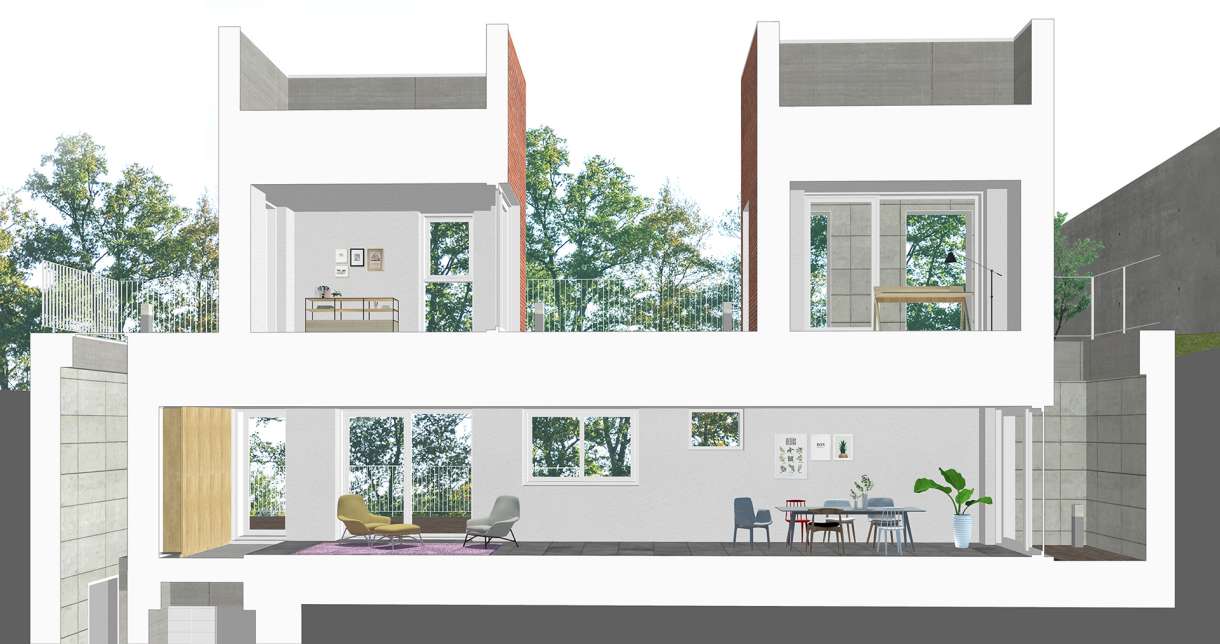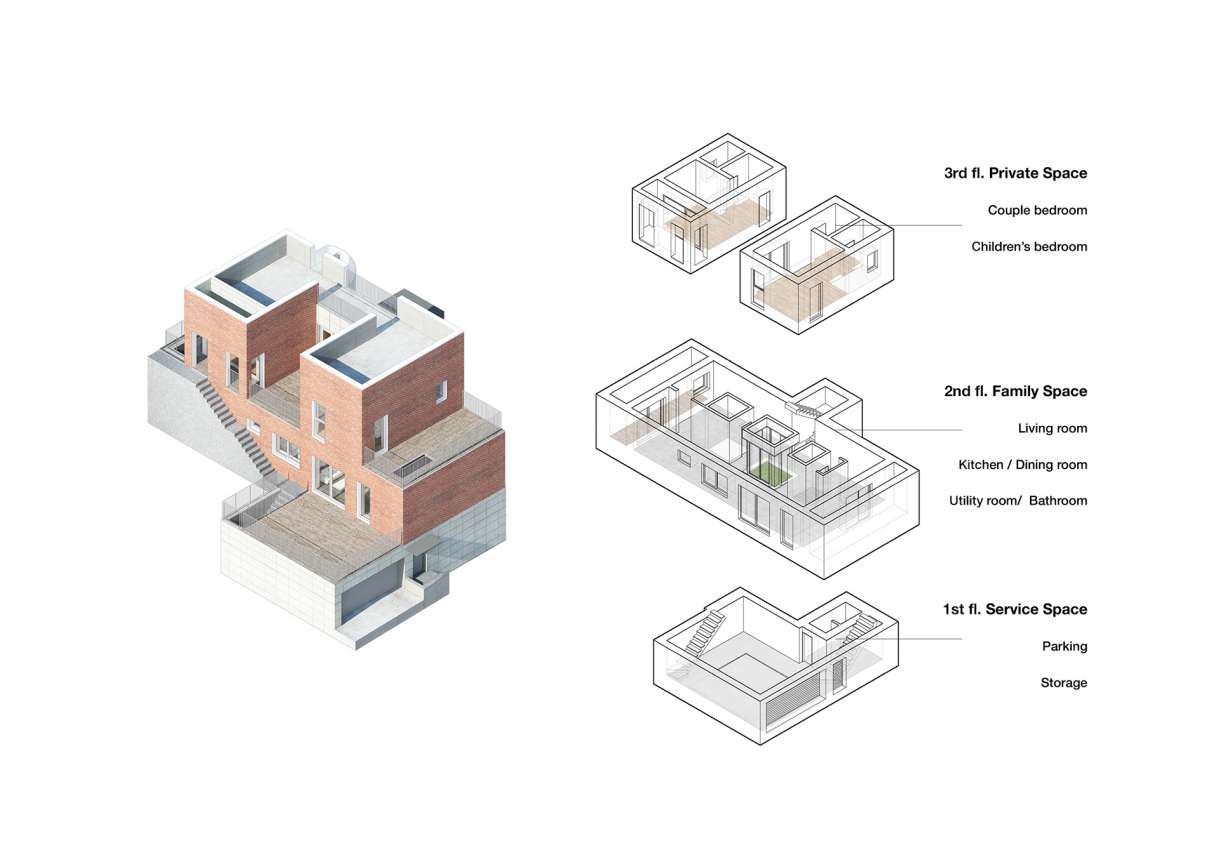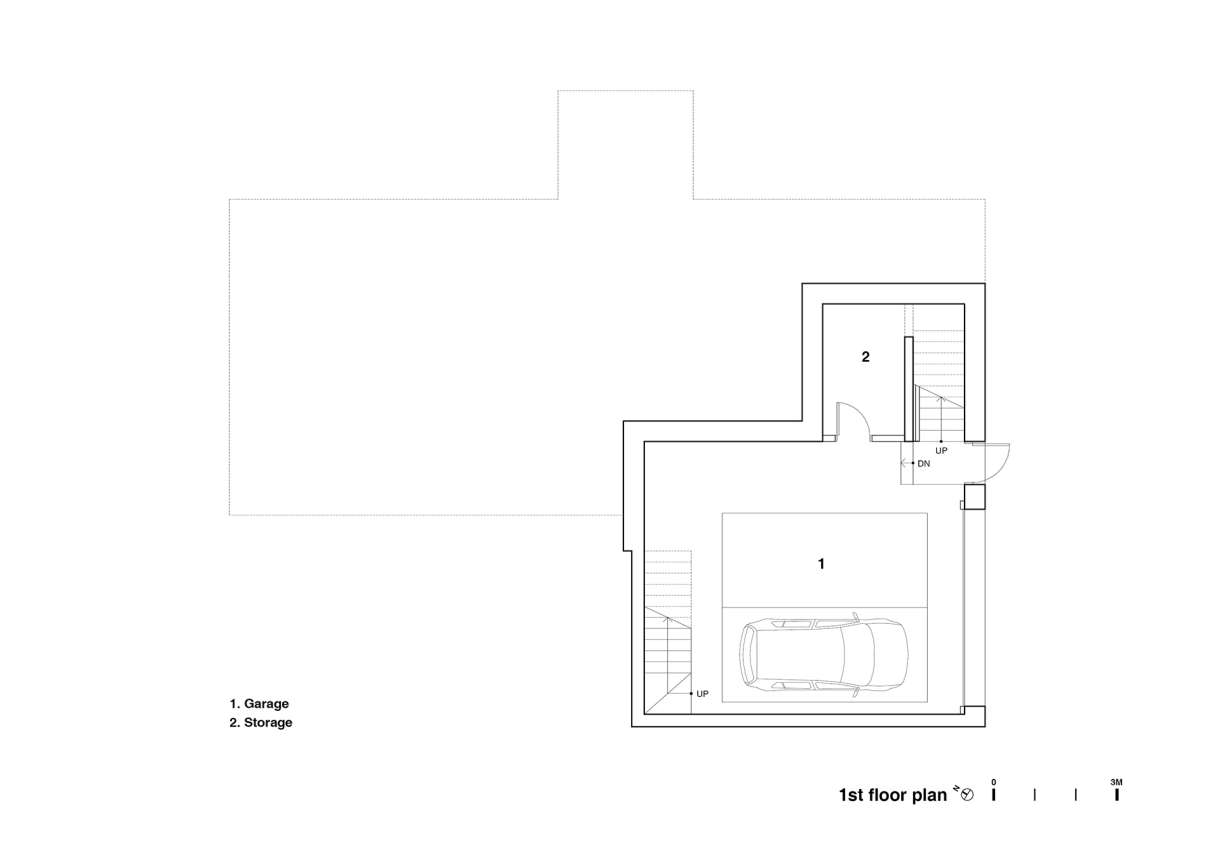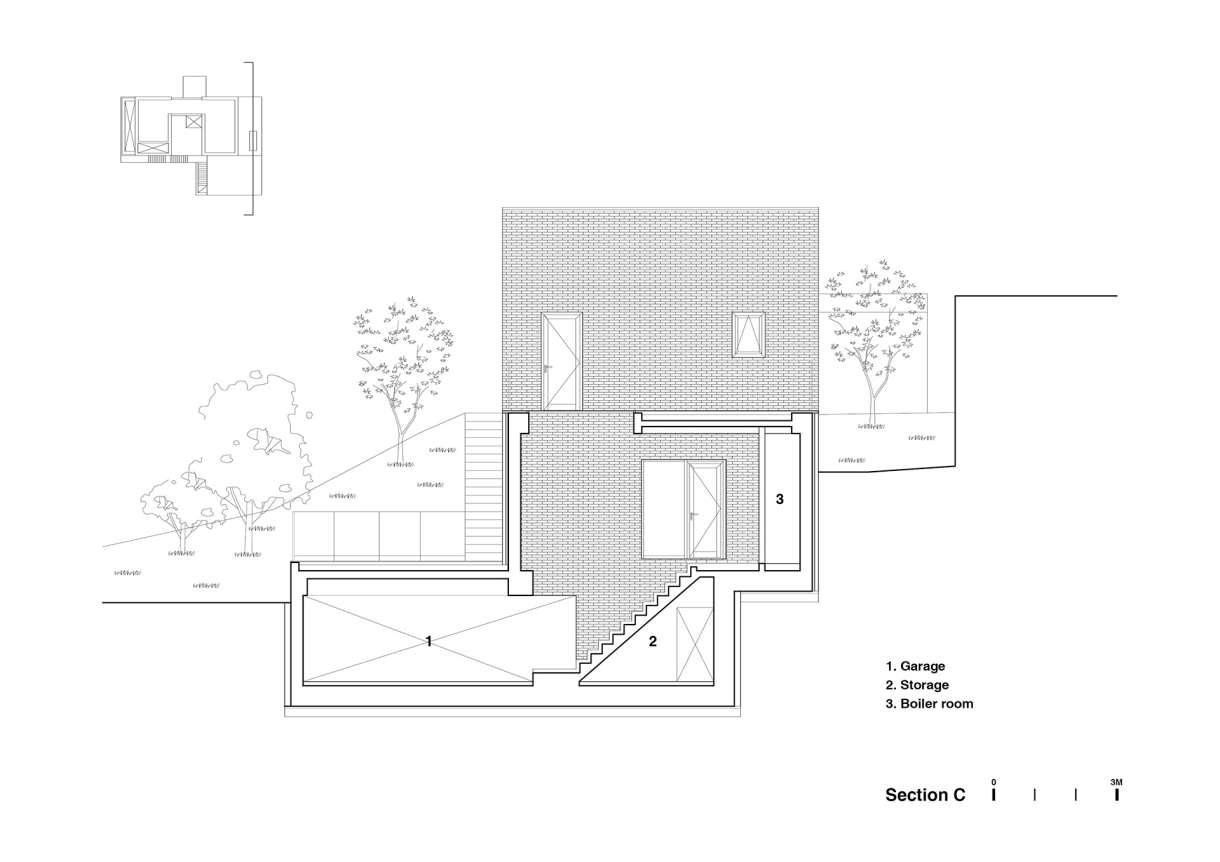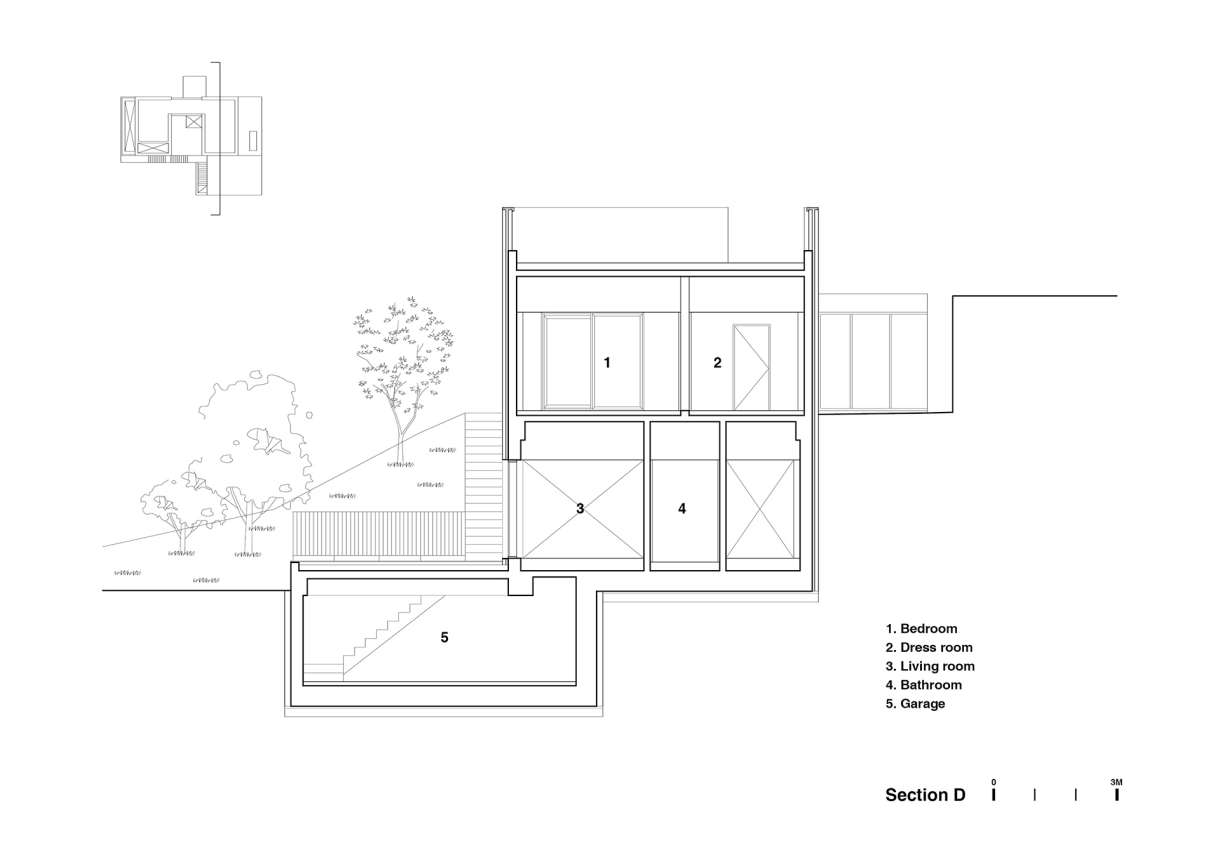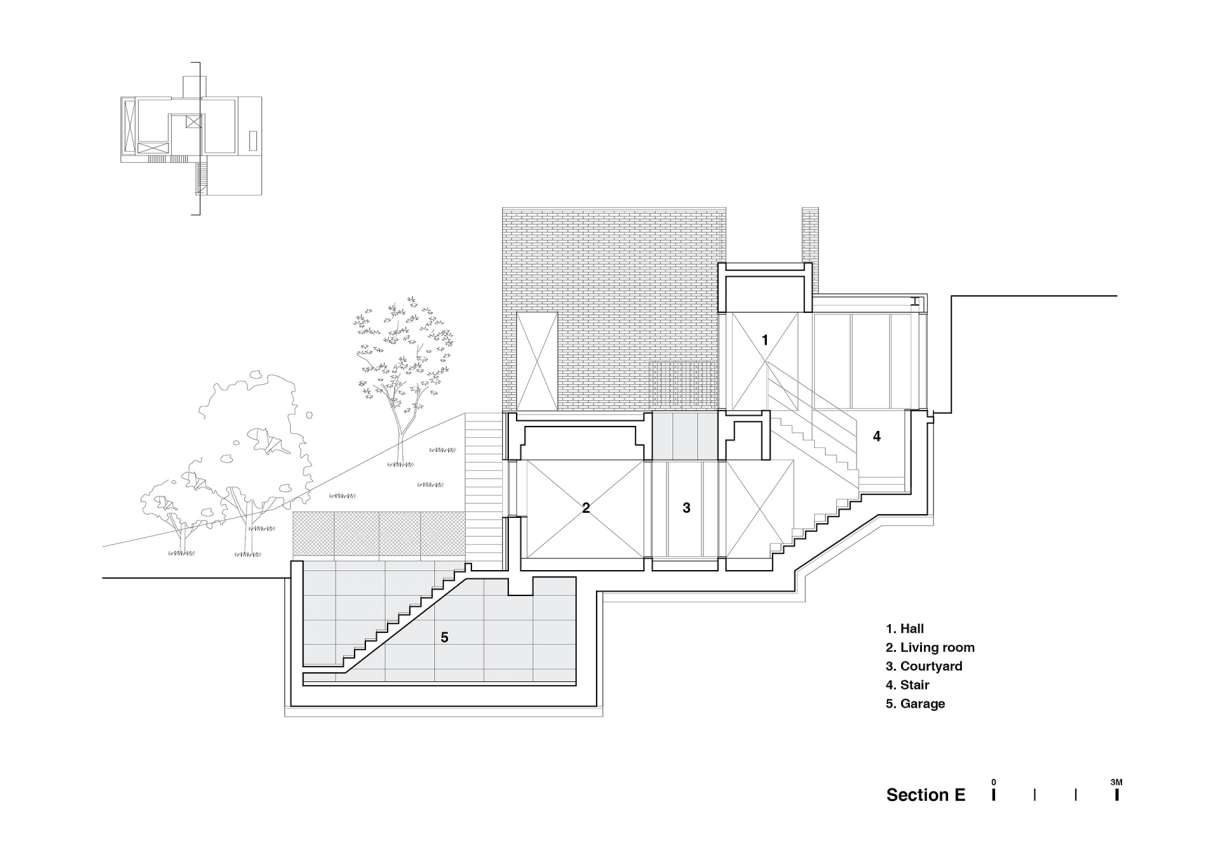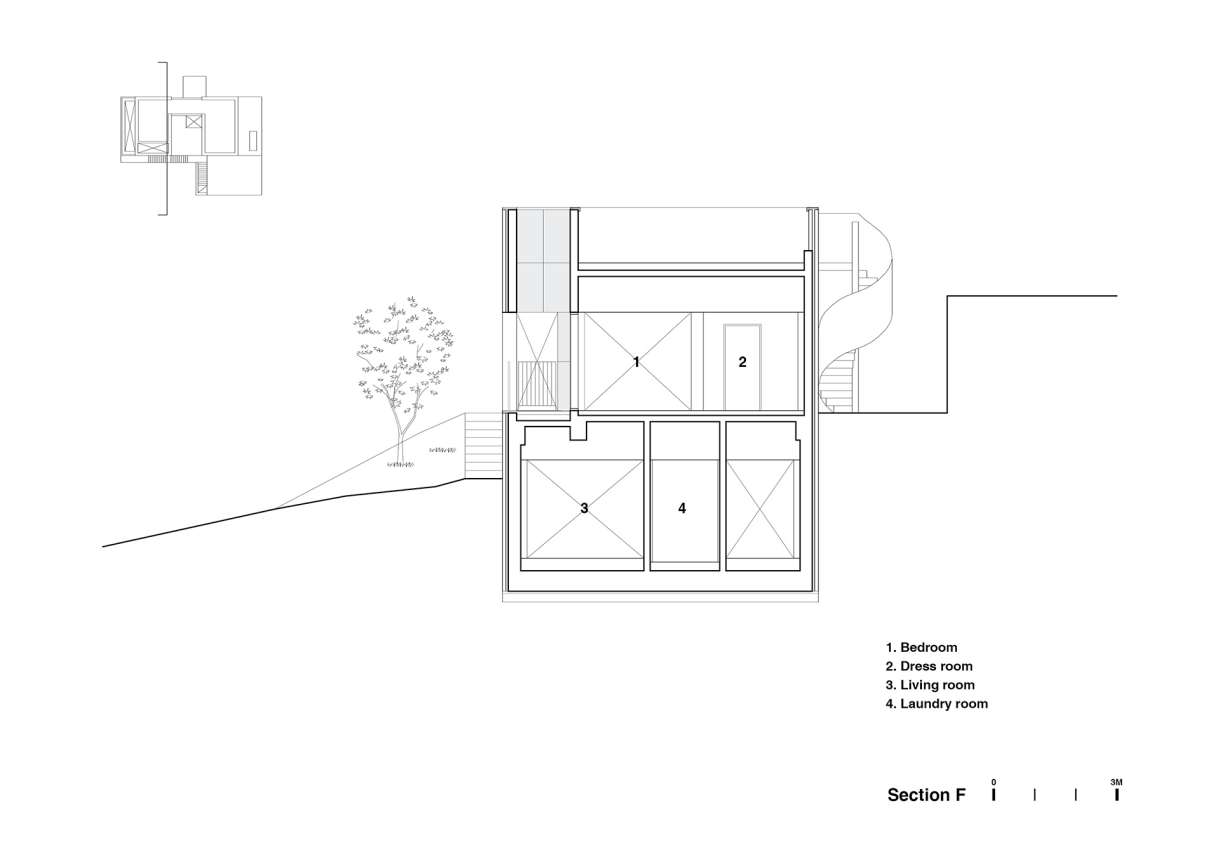글 & 자료. 건축사사무소 건축농장 Farming Architecture
Poly House
폴리하우스(Poly house)는 초등학생 자녀를 둔 부부와 자녀를 위한 공간이다. 현대의 여느 가족처럼 하루 일과 상당 부분을 집 밖인 학교와 직장에서 보낸다. 그럼에도 거주공간은 일상이 반복되는 무대이며, 가족들의 일상은 분리되지 않는 하나의 유기적인 덩어리이다. 시간과 공간을 공유하는 것, 프라이버시를 존중하는 것은 주거공간을 설계함에 있어 모순적이면서도 필수적인 룰이다. 그 속에서 우리는 늘 새로운 이야기를 찾고 이벤트처럼 소소한 즐거움과 일탈을 기대한다.
Poly house was built for a couple with elementary school-age children. Like all families today, they spend a considerable amount of their time away from home, at school or at work. Nonetheless, their living space forms a stage where everyday life patterns are repeated, and this everyday life is an inseparable, organic whole. When designing a dwelling, sharing time and space and respecting privacy are contradictory yet essential rules. Within this, we always seek new stories and look forward to small pleasures and deviations as if they were events in themselves.


폴리하우스는 고정불변의 건축이 ‘어떻게 끊임없이 변화하는 사용자 생활의 패턴과 욕망에 대응 할 수 있는가?’에 대한 물음이자, 그것에 대한 제안이다. 이상적인 집의 기능과 미에 대해 새로운 해석을 보여주는 과정이기도 하다. 폴리하우스는 개인과 가족공간에 사이에 불확정적인 ‘틈’을 가진다. 이 ‘틈’은 개인과 개인, 공간과 공간 사이의 여유이고, ‘거주공간’과 ‘사용자의 삶’을 연결하는 가능성이다.
Poly house poses the question of how a fixed architectural structure can respond to the patterns and desires of the occupants’ constantly changing lives, and suggests an answer. It is also a process that shows a new interpretation of the functions and aesthetics of the ideal home.
Poly house has indeterminate “gaps” between personal and family space. These gaps are margins between individuals and between spaces, and are possibilities that connect living space and the lives of occupants.


진입도로의 위치, 6미터의 고저차를 가진 경사지, 20% 밖에 되지않는 건폐율 등 대지의 복잡한 조건들은 최적의 설계안을 찾는 실마리가 된다. 건물 전체의 절반이 땅에 묻히고, 나머지 절반은 마당 수면위로 모습을 드러낸다. 폴리하우스는 실내와 외부가 만나거나, 그 경계가 역전되는 ‘중성적인 공간(ambivalent space)’을 적극적으로 활용한다. 이는 집 내부에 접촉면을 높이고, 내외부의 시각적 단절을 최소화한다. 외부에서 보여지는 형태의 단순함과는 대조적으로 내부에 숨겨진 변칙적인 요소들이 다양한 뷰를 창출한다. ‘틈’과 ‘중간적인 공간’을 통해 평면적인 거주 환경이 아닌 내밀한 주거공간을 경험할 수 있다.
The complex conditions of the site, including the position of the entryway, the sloping land with a maximum height difference of six meters and the building coverage ratio of just 20%, provided clues for finding the optimum design. Half of the entire building is buried in the ground, while the other half reveals itself above the surface of the yard. Poly house makes active use of ambivalent spaces where interior meets exterior or where such boundaries are inverted. This raises the contact surfaces inside the house and minimizes visual severance between the inside and the outside. In contrast to the simplicity of the form visible from the outside, the irregular elements on the inside create diverse views. Gaps and ambivalent spaces allow users to experience not a flat living environment but an intimate living space.


틈과 여백은 시선과 바람이 통하는 경험적인 공간을 넘어서, 가족 구성원 사이의 ‘심리적인 거리’를 의미한다. 전체 매스는 크게 서비스공간, 가족공간 그리고 개인공간으로 구분되며 사용자의 생활과 가족 사이의 관계가 고스란히 이 개별 공간에 스민다. 가족공간의 장방형 코어에는 거실과 주방, 다용도실과 욕실, 내부 중정이 배치되고, 선형(linear)코어는 순환되고 열린 회랑형 공간이 된다. 주방, 식당, 거실 사이의 최소화된 경계를 이용하여 필요에 따라 공간적인 위계를 유연하게 바꾼다.
Gaps and margins are more than spaces of experience through which sight lines and wind can pass; they signify psychological distance between members of the family. The entire mass can broadly be divided into service space, family space and personal space. The lives of the occupants and the relationships between family members permeate these individual spaces as they are. The living room, kitchen, utility room, bathroom and inner courtyard are placed in the family space, while the linear core is a circulatory, open space in the form of a corridor. Use is made of the minimized boundaries between the kitchen, dining room and living room, where spatial hierarchy changes flexibly according to need.





개인공간인 상부매스에는 부부침실과 자녀공간이 독립적으로 배치되어 서로의 프라이버시를 확보한다. 두 개의 개인실 사이의 가벽과 데크 등 사이공간들이 심리적 거리를 유지해준다. 곳곳에 삽입된 데크와 선큰이 공간을 분절하고, 그 쪼개진 틈과 사이공간들이 다양한 쓰임과 조망을 가진다. 건물의 좌우측 측면의 포켓공간과 거실 중앙에 배치된 작은 중정이 저층부가 대지에 바로 접하면서 취약해질 수 있는 환기와 채광을 보완한다. 외부 전면계단과 뒷마당의 원형계단을 통해 건물과 대지, 옥상공간이 입체적으로 연결된다.
In the upper mass, consisting of private space, the parents’ bedroom and children’s area are placed independently of each other, ensuring mutual privacy. Intermediate spaces such as free-standing walls and decking between these spaces maintains psychological privacy. Decking and sunken spaces inserted in here and there sever the space; thus created, these gaps and in-between spaces offer various uses and views. The pocket spaces on the left and right sides of the building and the small courtyard in the center of the living room put the lower floors in direct contact with the earth, adding ventilation and lighting that could otherwise have been inadequate. The outer stairs at the front and the spiral staircase in the back yard provide three-dimensional links between the building, the site and the rooftop space.


폴리하우스는 겉으로 단단하고 반듯한 덩어리지만, 안으로는 얇은 겹들로 구성된다. 다양한 입면과 오프닝, 그리고 순환 동선은 마치 스폰지와 같다. 빛과 바람이 막힘없이 흐르고, 경계가 느슨한 다공의 건축은 천편일률적인 아파트와 주거공간에 대한 새로운 대안이다. 폴리하우스는 개인공간, 가족공간 사이의 지속적인 소통으로 열린 주거공간이 된다. 주변 환경과 삶이 공간에 투영되고, 자유로운 액자 프레임을 닮는 집에는 사람과 풍경이 차곡차곡 쌓여갈 것이다.
From the outside, Poly house is a solid, square mass, but on the inside it consists of thin layers. Its various elevations, openings and lines of circulation are like a sponge. Light and air flow unimpeded, while the porous architecture, with flexible boundaries, offers a new alternative to monotonous apartments and other living spaces. The surrounding environment and lives are projected into the space, so that the house will accumulate neat layers of people and scenery like a frame.



